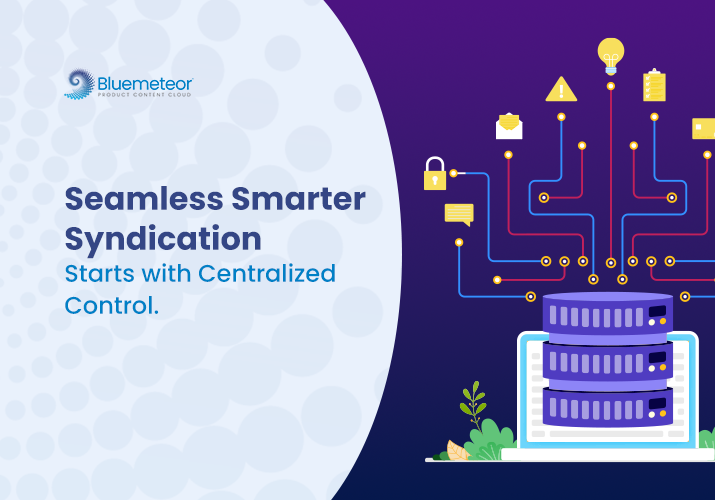PIM Integration Made Simple: Connect Your Tech Stack for Seamless Product Data Flow

Product data is at the core of modern commerce. From marketing and sales to logistics and customer support, every department relies on accurate and up-to-date product information. But managing product content across multiple systems like eCommerce platforms, ERPs, CRMs, and marketplaces, can quickly become chaotic. This is where PIM integration comes in.
It acts as the bridge that connects your entire tech stack, enabling a smooth, consistent, and centralized flow of product data. When done right, product data integration reduces manual errors, increases operational speed, and drives a better customer experience.
Let’s break down how it works and why it matters more than ever.
What Is PIM and Why Is Integration Critical?
Product Information Management (PIM) is a system designed to centralize and manage product data across all sales and distribution channels. It helps teams organize SKUs, images, technical specs, SEO content, pricing, translations, and more, all in one place.
However, a standalone PIM system can’t deliver full value without seamless integration into your broader software ecosystem. Your ERP, eCommerce platform, DAM (Digital Asset Management), and even marketing tools need to exchange data with the PIM system regularly.
That’s where PIM integration plays a pivotal role. It allows businesses to automate data exchange between systems and maintain a single source of truth across all touchpoints.
Key Benefits of Effective Product Data Integration
When businesses handle product information across multiple platforms, integration plays a crucial role in saving time, reducing errors, and improving efficiency. Here are some of the key benefits:
1. Eliminates Manual Data Entry
One of the biggest time-wasters in product lifecycle management is manual data re-entry. With a well-integrated PIM, product attributes entered once are automatically synchronized across platforms. No retyping, no cut-and-paste errors.
For example, a retailer updating product sizes in one system doesn’t need to retype the same data into their online store and marketplace listings. The PIM syncs it automatically.
2. Accelerates Time-to-Market
When product launches involve coordinating between multiple departments and systems, delays are inevitable. Product data integration ensures that as soon as data is approved in one system, it’s ready for deployment everywhere else.
3. Ensures Consistency Across Channels
Different platforms often require variations of product content like images in different resolutions, descriptions in different formats, region-specific pricing. An integrated PIM system allows you to configure these rules and deliver channel-optimized content without manual intervention.
4. Improves Collaboration
Marketing, sales, and product teams often operate in their own silos. Integration between PIM and other systems gives every team access to the same updated data, improving transparency and coordination.
For example, when the product team updates specifications, the marketing team instantly gets accurate descriptions and the sales team sees correct pricing, all from the same source.
| Benefit | Description |
| Eliminates Manual Data Entry | Product attributes entered once are automatically synchronized across platforms, removing the need for repetitive typing and reducing cut-and-paste errors. |
| Accelerates Time-to-Market | Approved product data is instantly available across all systems, helping businesses launch products faster without unnecessary delays. |
| Ensures Consistency Across Channels | Integrated PIM systems deliver channel-optimized content (images, descriptions, pricing, etc.) automatically, ensuring accuracy across platforms. |
| Improves Collaboration | Teams across marketing, sales, and product development access the same updated data, breaking silos and enhancing coordination. |
Common Integration Scenarios
Let’s take a look at some typical use cases where PIM integration adds measurable value.
a. ERP to PIM
The ERP system houses financial and logistical data like product codes, inventory levels, and supplier details. Integrating it with your PIM means this data gets automatically pulled into your product content without delay or error.
b. PIM to eCommerce Platforms
Most businesses today operate across one or more online platforms like Shopify, Magento, BigCommerce, or custom solutions. A direct PIM-to-eCommerce integration allows real-time updates of product information, pricing, and availability.
c. PIM to Marketplaces
Marketplaces like Amazon, eBay, or Zalando often have strict formatting and compliance rules. Integration ensures that your product listings meet these standards and are updated automatically with any data changes.
d. PIM to DAM
Visual content like product photos, manuals, videos, often live in a separate DAM system. Integration between your PIM and DAM enables a more complete product record and eliminates broken asset links or outdated visuals.
Choosing the Right Integration Strategy
There’s no one-size-fits-all when it comes to product data integration. Your choice depends on your systems, business scale, and technical resources.
1. API-Based Integration
Modern PIM systems offer robust APIs that let you build real-time, bi-directional data connections with other software. This approach is flexible and scalable, especially for businesses with custom platforms.
2. Middleware or iPaaS Tools
Integration Platform as a Service (iPaaS) solutions like MuleSoft, Boomi, or Celigo act as intermediaries between systems. These are ideal for businesses with limited internal development resources or complex architecture.
3. Pre-Built Connectors
Many PIM vendors offer plug-and-play connectors for popular systems like Salesforce, Adobe Commerce, and SAP. These save time but may lack deep customization.
| Step | Integration Strategy | What It Is | Best For | Pros |
| 1 | API-Based Integration | Real-time, bi-directional links between PIM and other systems using REST/GraphQL APIs. | In-house dev skills; custom platforms; fast-changing needs. | Highly flexible and scalable; fine-grained control; real-time sync. |
| 2 | Middleware / iPaaS (MuleSoft, Boomi, Celigo) | Cloud hub connecting apps with drag-and-drop flows, transformations, and monitoring. | Limited dev resources; many systems; complex transformations. | Quick to build; reusable flows; built-in logging, error handling, schedulers. |
| 3 | Pre-Built Connectors (Salesforce, Adobe Commerce, SAP) | Vendor plug-and-play connectors between PIM and popular platforms. | Standard stacks; quick time-to-value; common use cases. | Fastest rollout; low upfront effort; vendor support. |
Best Practices for Smooth Product Data Integration
To get the most out of product data integration, businesses need to follow structured practices that reduce errors and ensure long-term efficiency. Here are some key guidelines to consider:
- Audit your current tech stack to identify integration needs and potential data overlaps.
- Standardize data formats across systems to avoid mapping issues.
- Define clear data ownership rules, which means who controls what and when.
- Plan for scalability and make sure your integration setup can grow with your product catalog.
- Monitor and log integration activity to catch errors early.
Future-Proofing Your Product Data Flow
The future of digital commerce is omnichannel, automated, and data-driven. As businesses expand into new platforms and markets, managing product information manually becomes impossible. Integration between systems isn’t just a tech requirement. It’s a business imperative.
More organizations are turning to AI-based PIM systems, which further amplify the benefits of integration. These can automatically enrich product data, detect inconsistencies, and predict errors.
Streamline Product Data Integration with Bluemeteor’s Intelligent Platform
Managing product information across multiple systems comes with challenges such as manual data entry, inconsistent content, and coordination between teams. Following best practices helps, but the right technology makes it easier.
Bluemeteor’s AI-powered Product Content Cloud connects ERPs, eCommerce platforms, DAMs, and supplier portals, enabling smooth data flow across your tech stack.
It automatically synchronizes product data, ensures consistency across channels, and gives all teams access to the same up-to-date information.
By aligning with best practices like standardized formats and clear data ownership, Bluemeteor reduces errors and accelerates time-to-market.
With scalable, synchronized solutions, it transforms traditional workflows, making product data integration faster, more reliable, and easier for your teams.
Conclusion
Discover how Bluemeteor’s intelligent platform can make PIM integration faster, smarter, and fully scalable.
Whether you’re managing complex product catalogs or streamlining supplier onboarding, our AI-powered solutions are built to help you move with speed and precision.
Ready to see it in action? Book a personalized demo today and explore how Bluemeteor can power your product data strategy from end to end.
Schedule your consultation now and start transforming your product information management.




